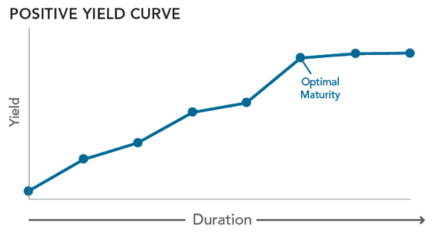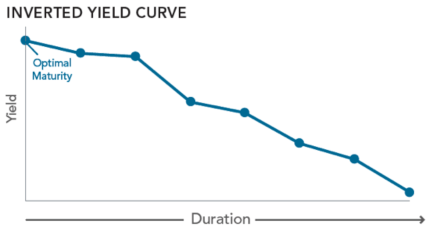
Fixed Income Factors in a Rough-and-Tumble Market

Smoothing out the ride
In our last two blog posts, we provided some of the key building blocks that make for a solid fixed-income foundation. First, we described the stabilizing role that fixed income typically plays in your portfolio. Next, we discussed why we advise against trading in reaction to current bond market conditions (including the existing climate) rather than according to your own investment goals. Today, we’re going to explore the strategy to which we typically turn in assisting our clients with their fixed income/bond investments.
Guiding principles are one thing. Then there’s real life, where principle and practice could often use a good marriage counselor to see eye to eye. For that, we typically turn to Dimensional Fund Advisors. Their approach to managing fixed income (bond market) risks and returns aligns well with our own. It’s grounded in solid, peer-reviewed academic theory, while also accounting for the costs and frictions inherent to participating in our rough-and-tumble markets.
When you invest in a bond (fixed income), you’re actually loaning your capital to the borrower – the U.S. government, a municipality or a corporation. In a perfect world, you receive a certain interest rate on your loan, which comes due on a certain date. If you purchase a $10,000 bond that’s paying 1 percent interest and due to mature in a year, you can expect to receive $10,100 at the end of the year.That’s simple enough, but then there’s pesky reality, where we are forever encountering the unexpected, aka, risks. Just as with stocks, our highly efficient markets set a bond’s purchase price based on how risky the investment appears to be, as measured in two ways:
• Credit-quality risk – The lower the credit quality, the more likely a bond is subject to the risk of default.
• Maturity risk – Bonds that mature further into the future have a longer period of time during which they are exposed to the risk of unexpected changes in interest rates. In short, there’s more time for something to go wrong.
An Exploration of Bond Risks
Credit-quality risk is relatively straightforward. Based on historical evidence, credit-quality risk is not expected to yield sufficient reward compared to available equity risk factors. So we typically recommend minimizing bond credit-quality risk by investing in high-quality bonds and stretching for any risk-based rewards from the stock portion of your portfolio.
Things get more complicated with maturity risk. Shorter maturities are generally less risky with lower yields; longer maturities increase expected risk and reward. Unfortunately, there’s no one maturity, such as 2.5 years, that represents the permanent sweet spot where investors should always seek to be in their tradeoff between risk and reward.
As with any market, bond prices are forever fluctuating as they adjust to new challenges and opportunities. Current bond market conditions are presented in a chart known as the yield curve, which offers a snapshot of what returns are being offered for which maturities. Depending on how the relationship between yield and maturity is playing out, the curve can be convex or concave, as well as steep or shallow. The shape of that yield curve helps bond investors determine where the ideal maturity is at any given point in time.


Why Dimensional Fund Advisors?
As with your equity investing, fixed income investing calls for careful, evidence-based strategy.
• Risk factor management – There are the credit-quality and maturity risk factors to manage, as described above.
• Global diversification – There is value to be gained by diversifying your investments globally (where each bond market has its own yield curve to be monitored)
• Cost control – There are trading costs known as mark-ups and mark-downs that require a sharp eye, access to deeper information than is typically available to end investors and considerable negotiation brawn. In other words, you typically need to be a major player to get decent pricing … or to even know the trading prices you’ve paid.
At the end of the day, our goal is to ensure that: (1) your fixed income holdings are playing an appropriate role within your overall portfolio and (2) you’re making the most you can out of your investments. To these ends, Dimensional offers a variety of global fixed income funds to meet a variety of investors’ distinct needs. It applies a “variable maturity” approach in most of the fixed income funds they offer. The approach uses the aforementioned current yield curve to determine that optimal sweet spot between maturity and expected returns, choosing shorter maturities in flat or inverted yield curve environments and longer maturities in upwardly sloped curves. Holdings’ maturities are then shifted in response to changes in the current yield curve.
Across all of its fund offerings in both equity and fixed income, Dimensional adopts a patient, evidence-based approach to its trading activities, rather than the more typical behavior of seeking to predict and react to an unknowable future. In their materials, they explain, “the virtue of working with markets, rather than against them is that there is rich information available in market pricing.” They add, “Our approach always is to respect the market, take only those risks worth taking, and to manage risk through broad diversification.”
A simple enough statement in theory. The power lies in its marriage to solid, practical application. Let us know if we can help you implement your own fixed income portfolio during these uncertain times.
SAGE Serendipity: Speaking of subjects that can be a lot more complex than they may at first appear, take a look at which show has been declared “the most mathematically sophisticated television show in the history of primetime broadcasting.” (Hint: Doh! It’s not what you might think.)
 Secure Document Sharing
Secure Document Sharing


